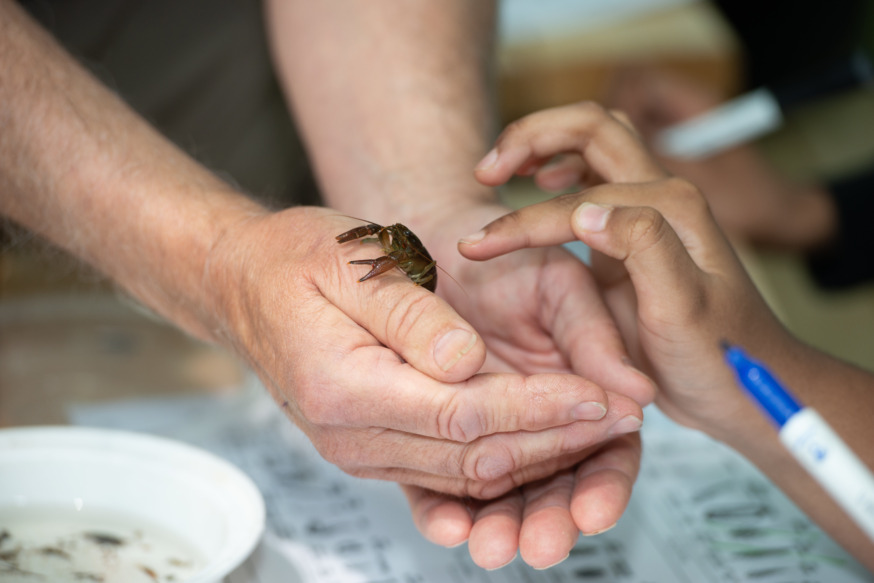
Students from Hunters Point Community Middle School release juvenile trout they raised in their classrooms in a Westchester creek. (Photo courtesy of NYC DEP)
May 26, 2023 By Bill Parry
More than two dozen students from a Long Island City school took a recent field trip to Westchester County to release juvenile trout that they have raised in their classrooms since last October.
The city’s Department of Environmental Protection (DEP) joined Trout Unlimited, the Watershed Agricultural Council, as 28 sixth-graders from the Hunters Point Community Middle School released 15 “fingerlings” into the Cross River, where it passes through the Ward Pound Ridge Reservation. The Cross River feeds into the city’s Cross River Reservoir.
Since 2002, DEP and Trout Unlimited, a national grassroots nonprofit organization whose mission is to conserve, protect and restore North America’s cold-water fisheries and their watersheds, have worked together to educate students from the five boroughs and upstate communities about the importance of protecting our shared water resources through the Trout in the Classroom program. The conservation-oriented environmental education program teaches young New Yorkers, ranging from pre-K to grade 12, about the connections between trout, the city’s water supply system, water quality and students from both sides of the city’s water tunnels.

(Photo courtesy of NYC DEP)
Many of the schools participating in the Trout in the Classroom program also receive support from watershed partner organizations, including the Watershed Agricultural Council, which provides watershed forestry bus tour grants to schools visiting the New York City Watershed, according to the DEP.
In October, more than 130 classroom teachers and educators joined the Trout in the Classroom Program’s Fall Teacher Conference and received trout eggs from the New York State Department of Environmental Conservation. Thousands of students from schools in New York City, as well as the city’s upstate watersheds, incubated the trout eggs in their classrooms and raised them into juvenile trout, which are also called fingerlings.

(Photo courtesy of NYC DEP)
This hands-on, eight-month-long program culminates with students taking part in designated field days between March and June during which they release the fingerlings into New York City watershed streams. During these trout release field days, students experience firsthand a watershed stream and forest, participate in nature hikes and macroinvertebrate studies and sing “Happy Free Day” to their beloved fingerlings.
The students also learn more about the DEP, which manages New York City’s water supply, providing approximately 1 billion gallons of high-quality drinking water each day to nearly 10 million residents, including 8.5 million in New York City. The water is delivered from a watershed that extends more than 125 miles from the city, comprising 19 reservoirs and three controlled lakes.

(Photo courtesy of NYC DEP)
Approximately 7,000 miles of water mains, tunnels and aqueducts bring water to homes and businesses throughout the five boroughs, and 7,500 miles of sewer lines and 96 pump stations take wastewater to 14 in-city treatment plants, including the Newtown Creek Wastewater Resource Recovery Facility in Greenpoint, Brooklyn. The city’s largest treatment facility features massive “digester eggs” that treat up to 310 million gallons of sewage per day directly across the creek from Hunters Point.






